SPECworkstation 3.0.2 Storage Benchmark
SPECworkstation benchmark is an excellent benchmark to test systems using workstation-type workloads. In this test, we only ran the Storage component, which is fifteen separate tests.
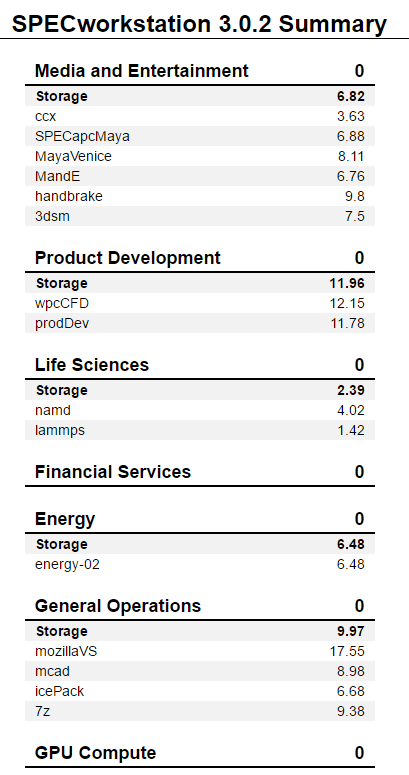
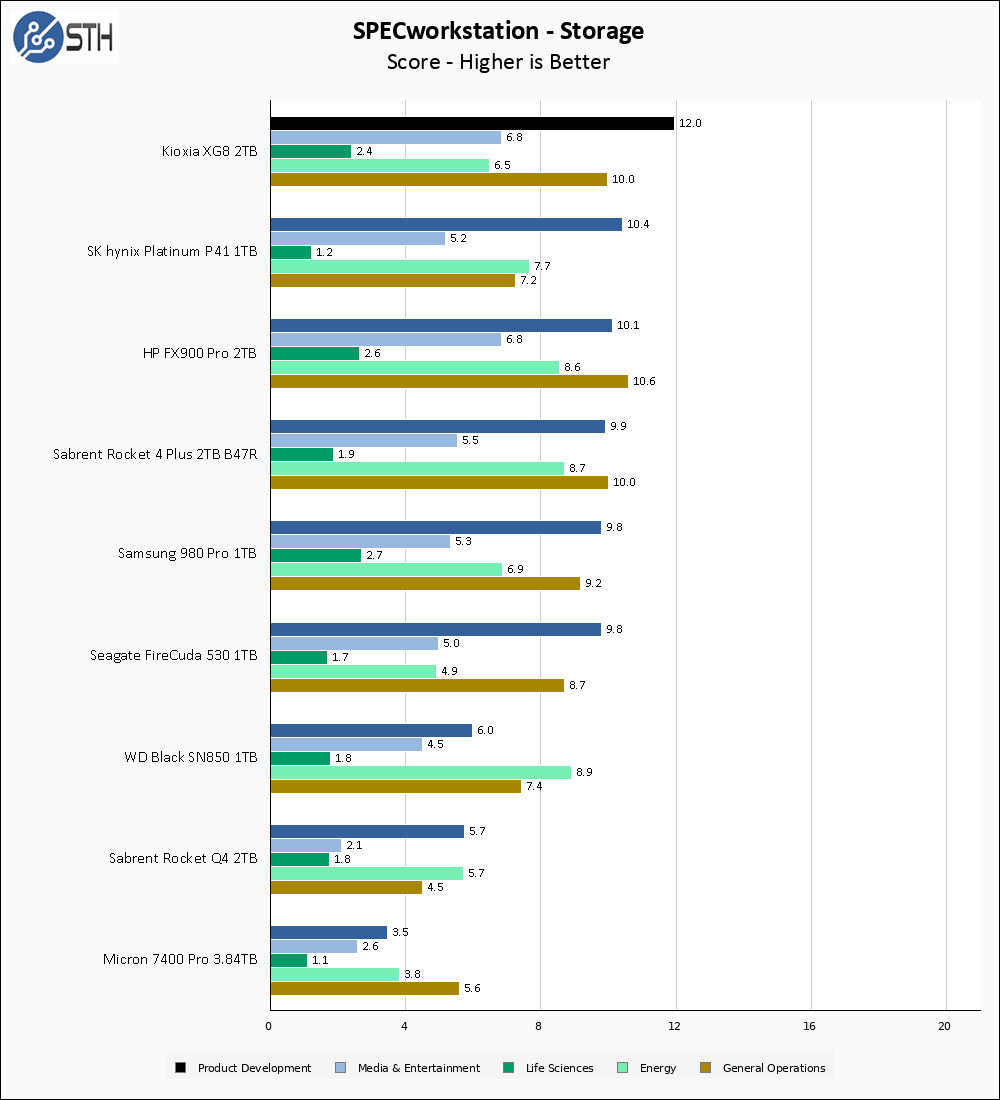
The Kioxia XG8 turns in an all-star SPECworkstation performance. Aside from the Optane P5800X, the XG8 turns in the best Product Development sub-score I have seen thus far, and has great scores in the other categories as well.
Sustained Write Performance
This is not necessarily a benchmark, so much as trying to catch the post-cache write speed of the drive. While I am filling the drive with data to the 85% mark with 10 simultaneous write threads, I monitor the drive for the write performance to dip to the lowest steady point and grab a screenshot.
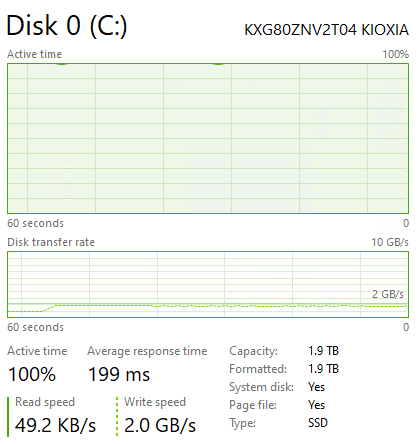
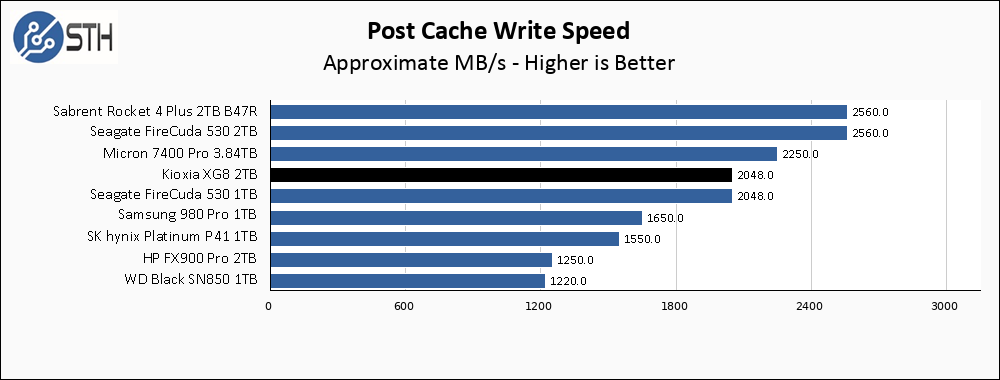
The Post-cache write speed on the Kioxia XG8 comes to 2 GB/s, which is excellent. The 2TB versions of the Rocket 4 Plus and FireCuda 530 manage a bit higher than that, but 2 GB/s is still very fast and more than enough for most users.
Temperatures
We monitored the idle and maximum temperature during testing with HWMonitor to get some idea of the thermal performance and requirements of the drive. Please keep in mind that our test bench is an open frame chassis in a 22C room, but with no direct airflow. As a result, this is not representative of a cramped low airflow case and is instead intended to model temperatures of a drive ‘on its own’.

In addition to the temperature reported by the internal sensor on the drive, we are now taking FLIR thermal photographs of the drives we test.
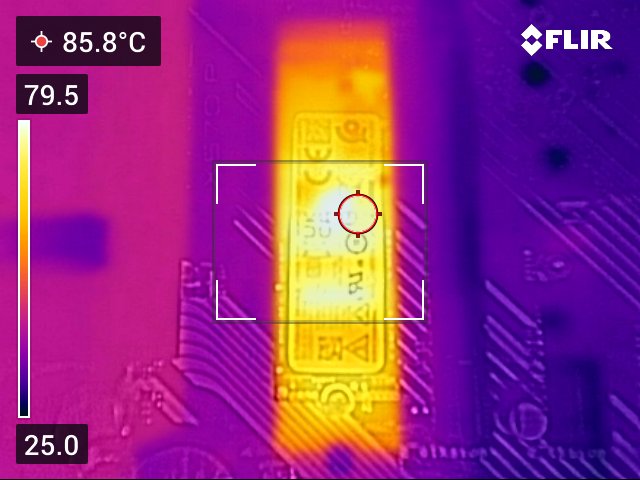
Typically hot-spots on the drive will spike above the temperature reported by the drive through its sensor, which is the case here.
The XG8 requires some kind of cooling if placed under a sustained heavy load, as it spikes to 79C and then thermally throttles itself. The thermal throttling resulted in a drop of sustained write speeds from 2 GB/s to around 1.1 GB/s, as can be seen below.
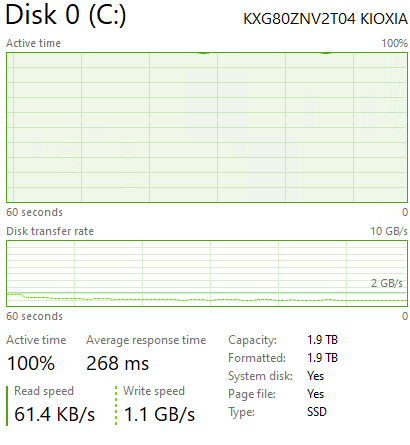
As a result of these thermal results, benchmarking for this review was done with an actively cooled heatsink attached to the XG8 to prevent thermal throttling from affecting the results. Lighter use scenarios would likely be fine without a heatsink.
Final Words
Normally I would discuss pricing, market positioning, and the benefits of purchasing the XG8 versus its competitors in this part of the review, but the XG8 is different. You cannot simply purchase an XG8; you only get one as part of a complete system purchase. They do not have a MSRP, nor a direct warranty.

What I can tell you about the XG8 is that, based on its performance alone, it is a good drive. There is not very much room above the XG8 on most of my performance charts, and there would be very little reason to upgrade a system equipped with an XG8 to a different SSD unless it was for capacity reasons. If your laptop or desktop comes equipped with an XG8, you can rest assured that your system performance will not be constrained by your storage device. Indeed, on the SPECworkstation performance, more akin to real-world workloads, the XG8 was stellar.
In short, I like the XG8 and were it available at retail, it would be a drive to consider. That is something that cannot be said about many OEM-only SSDs.




Not calling out Kioxia for this specifically, especially since they didn’t specifically list a warranty, but I always find it amusing when they list a MTTF of 170+ years (1,500,000 hours), but offer a 3-5 year warranty. Seems like someone doesn’t have faith in their MTTF. LOL